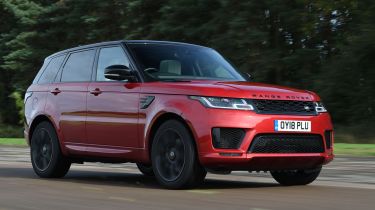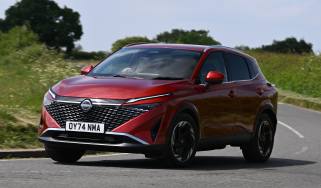Range Rover Sport (2013-2022) review - MPG, CO2 and running costs
Mild and plug-in hybrid tech helps improve efficiency, but running costs will still be high – it is a Range Rover, after all

First-generation Range Rover Sport models were very thirsty and this was accepted by owners as a price they had to pay. Things have moved on, though - the P400e plug-in hybrid is the most efficient choice. It emits between 72-87g/km of CO2 depending on spec, and offers a claimed economy of up to 88.3mpg on a combined cycle. You'll need to spend a lot of time in town and be able to keep the battery charged if you want to get anywhere close to that claimed economy in everyday use.
The P400 petrol returns up to 27.4mpg on average and emits between 234-258g/km of CO2. The D250 delivers up to 34.2mpg, with CO2 emissions up to 239g/km, while the D300 manages up to 34mpg and 242g/km. The more powerful D350 takes an efficiency hit with a maximum 31.2mpg and 254g/km of CO2.
Predictably, the petrol V8 engine is the worst performer, with the top-spec SVR averaging just 19.3mpg. CO2 emissions sit at 331g/km.
Naturally, a V8 Range Rover Sport will be expensive to run, but the six-cylinder models won’t be far behind. Tyres, brakes, general servicing – this big SUV has a thirst for all of them and you should budget accordingly, because it’s certainly in another ballpark compared to similarly priced executive saloons.
Insurance groups
Insurance is another significant expense for the Range Rover Sport. It’s a premium, in-demand, highly sought-after machine that’s constructed from aluminium and trimmed to the highest standards: repairing it after an accident won’t be cheap, and insurance premiums reflect this.
Ratings start expensive and become yet more expensive as you move up the range. The P300 HSE sits in group 45, while unsurprisingly the SVR model is in the top group 50.
The D300 diesel in HSE trim is in group 46, while Autobiography Dynamic-spec bumps it up to group 48.
Depreciation
The Range Rover Sport remains an in-demand machine and, as such, it’s highly prized on the used market. Residual values reflect this, with an average of 55 per cent of its original value retained over three years and 36,000 miles.





